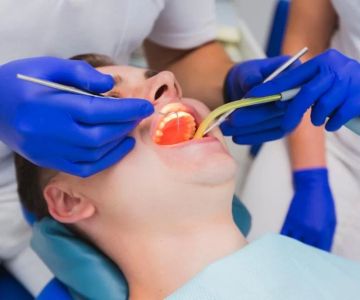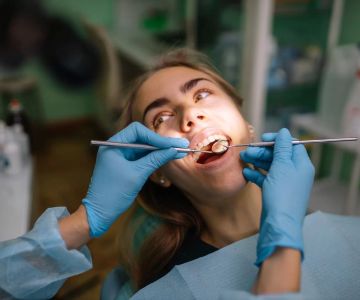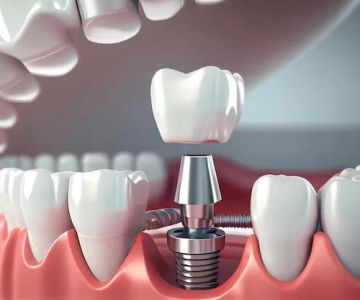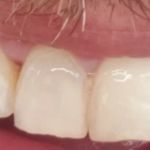Bite Problem Correction: Understanding, Causes, and Solutions for Perfect Bite Alignment
- 1. Understanding Bite Problems
- 2. Common Causes of Bite Problems
- 3. Types of Bite Problems
- 4. How to Correct Bite Problems
- 5. Benefits of Correcting Your Bite
- 6. When to See a Dentist for Bite Issues
1. Understanding Bite Problems
Bite problems, or malocclusions, refer to issues with the alignment of your teeth and jaws. A proper bite is essential for your overall dental health, as it affects how you chew, speak, and even breathe. A misaligned bite can cause a variety of problems, including discomfort, difficulty chewing, and increased risk of tooth wear and decay. Understanding what constitutes a "normal" bite and recognizing the signs of a bite issue is the first step toward effective correction.
2. Common Causes of Bite Problems
Bite problems can arise from a variety of factors, some of which are genetic, while others are environmental or behavioral. Here are the most common causes:
2.1 Genetic Factors
Some bite problems are inherited, meaning they are passed down from your parents. If your family members had crooked teeth or jaw misalignment, you might be more prone to developing similar issues.
2.2 Childhood Habits
Habits such as thumb sucking, prolonged pacifier use, or mouth breathing during childhood can impact the development of your teeth and jaws, leading to bite problems later in life.
2.3 Trauma or Injury
Accidents or injuries that affect the teeth or jaw can also lead to bite problems. A fractured or misaligned tooth may cause a shift in the way your teeth come together.
3. Types of Bite Problems
There are several different types of bite issues that may require correction. Each type can vary in severity, and the treatment options available will depend on the specific problem. The most common types include:
3.1 Overbite
Overbite occurs when the upper front teeth overlap the lower front teeth excessively. This can lead to tooth wear, gum irritation, and jaw pain if left untreated.
3.2 Underbite
An underbite is when the lower teeth extend beyond the upper teeth. This type of malocclusion can affect chewing and speaking, as well as cause discomfort in the jaw.
3.3 Crossbite
A crossbite happens when some of the upper teeth are positioned behind the lower teeth instead of in front of them. This can cause uneven tooth wear and gum recession.
3.4 Open Bite
An open bite occurs when there is a gap between the upper and lower teeth, even when the mouth is closed. This can make chewing and speaking difficult and may lead to other dental issues.
4. How to Correct Bite Problems
Correcting bite issues is essential for maintaining both your oral health and your overall well-being. Depending on the type and severity of your bite problem, different treatment options may be recommended. Here are some of the most common solutions:
4.1 Orthodontic Treatment
Braces are the most well-known and widely used method for correcting bite problems. By gradually shifting the teeth into the correct position, braces can correct a range of malocclusions. Traditional metal braces, ceramic braces, and clear aligners (like Invisalign) are all options depending on your specific needs.
4.2 Dental Surgery
In cases of severe bite problems caused by jaw misalignment, dental surgery may be necessary. Surgical procedures like jaw realignment can help correct significant bite issues and improve both function and appearance.
4.3 Retainers
After braces are removed, retainers are often used to ensure that teeth stay in their corrected positions. Retainers are custom-made and are worn at night to prevent teeth from shifting back.
5. Benefits of Correcting Your Bite
There are numerous benefits to correcting bite issues, both for your dental health and overall quality of life. Some of the main advantages include:
5.1 Improved Chewing and Speaking
When your bite is properly aligned, you’ll find it easier to chew food and speak clearly. Correcting bite issues can also prevent discomfort during these everyday activities.
5.2 Reduced Risk of Tooth Damage
A misaligned bite can cause excessive tooth wear, chipping, and even cracking. By correcting your bite, you protect your teeth from unnecessary damage.
5.3 Better Oral Health
Properly aligned teeth are easier to clean, which means you’ll have a lower risk of cavities and gum disease. A corrected bite also promotes healthier gums and better overall oral hygiene.
6. When to See a Dentist for Bite Issues
If you suspect you have a bite problem, it’s important to see a dentist as soon as possible. Early intervention can prevent more severe issues later on. Symptoms such as jaw pain, difficulty chewing, or tooth wear are signs that you may need professional help. A dentist or orthodontist can assess your bite and recommend the best course of action to correct the issue.
At Dentistry Toothtruth, we specialize in diagnosing and treating bite problems with state-of-the-art orthodontic solutions. Whether you need braces, retainers, or other forms of treatment, we’re here to help you achieve a healthy and beautiful smile.







 Maui Whitening Orlando4.0 (32 review)
Maui Whitening Orlando4.0 (32 review) Bloomington Southside Dental Care3.0 (26 review)
Bloomington Southside Dental Care3.0 (26 review) Christiana Dental Center4.0 (650 review)
Christiana Dental Center4.0 (650 review) Carolina Dental Arts - New Bern Ave4.0 (152 review)
Carolina Dental Arts - New Bern Ave4.0 (152 review) Equitas Health Short North Medical Center3.0 (96 review)
Equitas Health Short North Medical Center3.0 (96 review) Prosthodontics of Madison - Kendra Schaefer, DMD & Christine Roenitz, DMD4.0 (25 review)
Prosthodontics of Madison - Kendra Schaefer, DMD & Christine Roenitz, DMD4.0 (25 review) The Importance of Oral Health Education During Pregnancy for a Healthy Pregnancy
The Importance of Oral Health Education During Pregnancy for a Healthy Pregnancy Best Tips for Brushing Your Teeth Properly for Healthy Gums: Essential Techniques for Oral Health
Best Tips for Brushing Your Teeth Properly for Healthy Gums: Essential Techniques for Oral Health Why Skipping Dental Checkups Can Lead to Bigger Oral Health Problems
Why Skipping Dental Checkups Can Lead to Bigger Oral Health Problems Advantages of Porcelain Dental Restorations
Advantages of Porcelain Dental Restorations How Can Diabetes Cause Tooth and Gum Problems? Preventing and Managing Oral Health Issues
How Can Diabetes Cause Tooth and Gum Problems? Preventing and Managing Oral Health Issues Healthy Habits for Promoting Good Oral Health and Hygiene: Tips for a Healthy Smile
Healthy Habits for Promoting Good Oral Health and Hygiene: Tips for a Healthy Smile